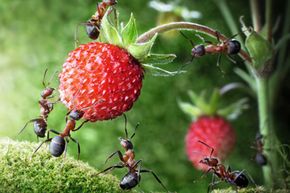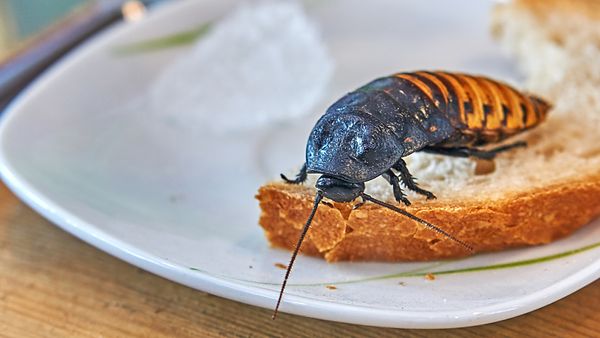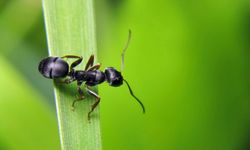Most ants are opportunistic feeders; they'll eat just about anything. That can include other ants, dead insects, parts of dead animals, grains, fruits and vegetables. Specific species do have preferences, though.
1. The Basic Diet of Black Ants
Black ants, often seen marching in a line, primarily feed on sugary substances. They are particularly drawn to the sweet secretions of aphids, known as honeydew.
These worker ants also indulge in fruits, nectar, and other sweet items found in their environment, demonstrating a preference for carbohydrates [source: Orkin Canada].
2. Fire Ants: A Spicier Palette
Fire ants have a more protein-rich diet. They are known for consuming dead insects, small vertebrates, and even other ant species in some cases. Their aggressive nature extends to their diet, showcasing their adaptability and survival instincts in various environments [source: AZ Animals].
3. Argentine Ants: Scavengers of Sweets and Protein
Argentine ants have a diverse diet that includes sweets, oils, and fats. These ants eat a variety of foods, such as sugary substances, dead insects, and even small animals [source: Earth Kind]. Their omnivorous diet makes them highly adaptable in different habitats.
4. Leaf Cutter Ants: Fungus Farmers
Leaf cutter ants are unique in that they don't eat the leaves they famously carry. Instead, these worker ants use leaves to cultivate a special kind of fungus, which is their primary food source [source: AZ Animals]. This fascinating symbiotic relationship highlights the complexity of ant dietary habits.
5. Carpenter Ants: Wood, Not on the Menu
Contrary to popular belief, carpenter ants do not eat wood. They chew through wood to create nests but primarily feed on proteins and sugars, including other insects and honeydew [source: AZ Animals]. Understanding this helps in effectively managing their presence in human dwellings.
6. Harvester Ants: The Seed Collectors
Harvester ants primarily feed on seeds, playing a crucial role in seed dispersal and ecosystem balance. They gather and store seeds, which form the main component of their diet, showcasing a unique dietary habit among ant species.
7. How Odorous Ants Feed
Odorous ants, known for the unpleasant smell they release when crushed, prefer a diet of honeydew and other sweet substances. However, they are also opportunistic feeders which means these ants eat other insects (dead insects) and other protein sources when available.
8. Ghost Ants: A Taste for Variety
Ghost ants, named for their translucent bodies, have an eclectic diet. These ants eat sweets, particularly honeydew and sugar water, but also consume dead and live insects [source: Earth Kind]. Their diet varies depending on their environment, showcasing their adaptability.
9. Pavement Ants: Diners on the Sidewalk
Pavement ants, commonly found under sidewalks and building foundations, have a versatile diet. These ants eat a variety of foods ranging from sweets, meats, and grease to dead insects and seeds [source: Earth Kind].
They are especially known for foraging on scraps and food particles in urban settings. This adaptability in their diet is a key factor in their ability to thrive in close proximity to human habitats [source: Earth Kind].
10. Sugar Ants: The Sweet-Tooth Specialists
Sugar ants, a term often used for various species attracted to sweet substances, are particularly fond of nectar, honeydew, and sugary household food. These ants are not just attracted to sugary foods; they also consume other insects, especially when protein is needed, such as during the breeding season.
The diet of these ants is a fascinating example of how ants can switch between different food sources depending on their nutritional requirements and environmental availability.
11. Thief Ants: The Stealthy Foragers
Thief ants, one of the smallest species, are known for their sneaky behavior. They often establish their colonies close to other ant nests and steal food, particularly insect eggs and larvae.
Their diet also includes oils, proteins, and occasionally sweets. This unique feeding strategy showcases the diverse and sometimes cunning survival tactics within the ant world.
12. Diet of Ant Larvae: The Nursery Menu
Ant larvae have a different diet compared to adult ants. Worker ants often feed them with insect eggs, small insects, and nutritional secretions from the queen. This protein-rich diet is essential for their growth and development.


